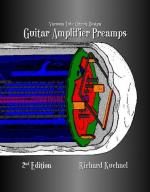|
This section contains 1,096 words (approx. 4 pages at 300 words per page) |

|
A vacuum tube is an electronic device used for the processing of electrical signals. It consists of two or more electrodes inside a metal or glass tube which has been evacuated, hence the name.
In the mid-1800s Sir William Crookes (1832–1919) performed early experiments with passing electric current through an evacuated glass tube. In 1883 Thomas Edison (1847–1931) noticed that current would flow between two electrodes inside a light bulb if the negative electrode was heated. John Ambrose Fleming (1849–1945) constructed the first practical diode tube, containing two electrodes. When the heated electrode, called the cathode, was at a negative voltage compared to the other electrode, called the anode or plate, electrons flowed from the cathode to the anode. When the voltages were reversed, electron flow was prevented.
This type of action is called rectification; it is used to change alternating current into direct current. This is...
|
This section contains 1,096 words (approx. 4 pages at 300 words per page) |

|



